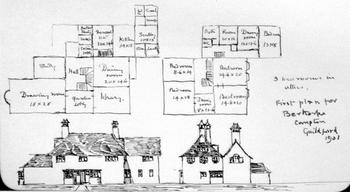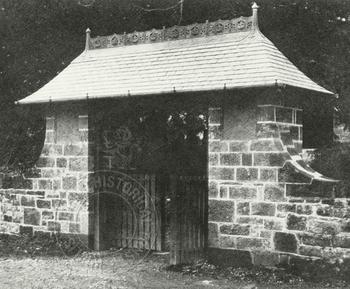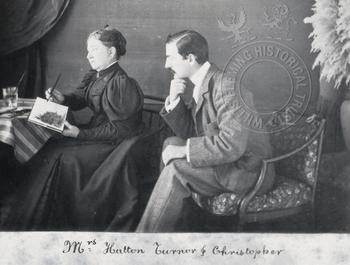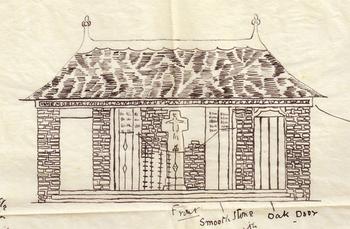New information suggests that the original design sketch of the Shrines is by the architect and social reformer Christopher Hatton Turnor (1873-1940).
The handwriting and style of the Shrine sketch (below) seems to match other drawings by Turnor (second below).

The design of the Shrine roof in the sketch closely resembles that of a lych gate (below) at Stackpole, Pembrokeshire, which was designed by Turnor.

After leaving Oxford University, Turnor initially worked as an architect, firstly for Edwin Lutyens - with whom he designed the Ferry Inn at Rosneath for Princess Louise - and later for the Arts & Crafts architect Robert Weir Schultz (1860-1951). Turnor's most famous independent work is the Watts Gallery in Surrey (which came second in the BBC Restoration programme in 2006). Turnor was an early enthusiast for cement as a building material. He was also a skilled craftsman, designing furniture and interior fittings. Turnor had apparently stopped practicing as an architect by the outbreak of the First World War.
Christopher Turnor - known as Kit - was a close friend of Charles Phillimore, Violet Willis Fleming's brother, and carried out architectural work for the Phillimore family at Shedfield in Hampshire. A director of Coutts Bank, Charles Phillimore was in charge of the Willis Fleming family's finances during the early twentieth century, when the Shrines were built.
In 1903, Turnor inherited his family's estates in Lincolnshire, and became increasingly interested in estate management and agricultural reform. He published several books on these subjects, for which he is best known.
Turnor remained friends with Lutyens, who with Gertrude Jekyll was a frequent visitor to Turnor's mansion at Stoke Rochford in Lincolnshire.
Turnor's first diary, which he kept from October 1917, however shows that he had nothing to with the physical construction of the Shrines from that date. During the War, he served on numerous Government committees.



